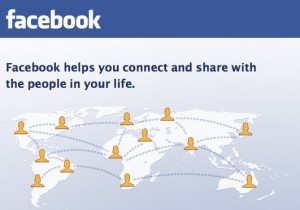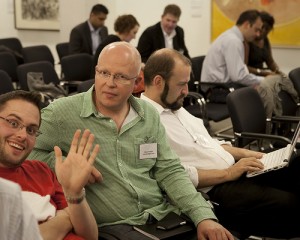
I spent an enjoyable afternoon at the advisory group for the Knowledge Hub (KHub) last Tuesday (sorry for the delay in writing this up…). Steve Dale chaired the day which featured a number of updates about the project, in terms of procurement and project management; technology platform and supplier; and communications and engagement.
Remember – the Knowledge Hub is the next generation of the Communities of Practice. Think of it as CoPs with an open API, plus some extra functionality.
The Knowledge Hub is going to be built by an outfit called PFIKS – who I must admit I had never heard of before. Their approach is heavily open source based and apparently they have about 80% of the Knowledge Hub requirements already working within their platform.
I’ve come away with a load of thoughts about this, most of which I have managed to summarise below.
1. Open platform
One of the strongest improvements that the Knowledge Hub will bring as compared to the current Communities of Practice platform is the fact that is will be open. This means that developers will be able to make use of APIs to use Knowledge Hub content and data to power other services and sites.
One compelling example is that of intranets – a suggestion was made that it would be possible to embed Knowledge Hub content in a council intranet – without the user knowing where the information came from originally. Later in this post I’ll talk about the engagement challenges on this project, but perhaps creative use of the API will enable some of these issues to be sidestepped.
Another aspect of this is the Knowledge Hub app store. I’m not quite sure whether this will be available within the first release, but it should come along pretty soon afterwards – it’s something Steve Dale seems pretty excited about. Developers will be able to create apps which make use of content and data stored within the Knowledge Hub to do cool stuff. I’m guessing it will be a two way thing, so content etc externally stored can be pulled into the Knowledge Hub and mashed up with other content.
It’s certainly something for Learning Pool, and I guess other suppliers to local gov, to consider – how can our tools and content interact with the Knowledge Hub?
2. Open source
The open source approach is to integrate various components into a stable, cohesive platform. This appears to be based on the Liferay publishing platform, with others bits added in to provide extra functionality – such as DimDim, for example, for online meetings and webinars; and Flowplayer for embedding video.
On the backend, the open source technology being used includes the Apache Solr search platform which is then extended with Nutch; and Carrot2, which clusters collections of documents – such as the results of a search query – into thematic categories. I think it is fair to say that the search bit of the KHub should be awesome.
What is also cool is that PFIKS publish their code to integrate all this stuff as open source as well – so not only are they using open source, they are also contributing back into the community. This is good.
Open Source, as I have written earlier, is not as simple a thing to understand as it might first appear. There are numerous complications around licensing and business models that have to be considered before a project commences. It certainly isn’t the case that by using open source tools that you can just rely on the community to do stuff for you for free – which seems a common misunderstanding.
Still, from the early exchanges, it appears that PFIKS get open source and are taking an active involvement in the developer communities that contribute to their platform. Hopefully the Knowledge Hub will end up as being a great example of collaboration between government, a supplier, and the open source community.
3. Data
One of the original purposes of the Knowledge Hub was that it would be a tool to help local authorities share their data. This was a couple of years ago, when Steve first started talking about the project, when data.gov.uk didn’t exist and the thought of publishing all purchases over £500 would have been anathema.
It would appear that the data side of things is taking a bit of a back seat at the moment, with the revamp of the communities taking centre stage. My understanding up until this point was that the Knowledge Hub would act as a repository for local government data to be stored and published. It would appear from some of the responses at the meeting that isn’t going to be the case now.
This is, in many ways, probably a good thing, as authorities like Lincoln, Warwickshire and Lichfield (amongst others) are proving that publishing data isn’t actually that hard.
However, all those authorities are those with really talented, and data-savvy people working on their web and ICT stuff. Are all councils that lucky? Perhaps not.
Hadley Beeman’s proposed project seems to be one that pretty much does what I thought the Knowledge Hub might do, and so again, maybe a good reason for the KHub not to do it.
When a question was asked about data hosting on KHub, the response was that it could be possible on a time-limited basis. In other words (I think), you could upload some data, mash it up with something else on the KHub, then pull it out again. Does that make sense? I thought it did, but now I have typed it up it seems kind of stupid. I must have got it wrong.
4. Engagement
You could count the number of people who actually came from real local authorities on one hand at the meeting, which for an advisory group is slightly worrying – not least because this was the big ‘reveal’ when we found out what the solution was going to be and who the supplier was. Actually – maybe that’s not of huge interest to the sector?
Anyway, it’s fair to say that there hasn’t been a huge level of interest from the user side of things throughout this project. Again, maybe that’s fair enough – perhaps in this age of austerity, folk at the coal face need to be concentrating on less abstract things. But now the KHub is becoming a reality I think it will become increasingly important to get people from the sector involved in what is going on to ensure it meets their needs and suits the way they work. By the sound of the work around the ‘knowledge ecology’ that Ingrid is working on, plenty of effort is going to be put in this direction.
It will also be vital for the Knowledge Hub to have some high quality content to attract people into the site when it first launches, to encourage engagement across the sector.
For all the talk of open APIs and the Knowledge Hub being a platform as much as a website, it still figures that for it to work, people need to actually take a look at it now and again. To drag eyeballs in, there needs to be some great content sat there waiting for people to find and be delighted by.
Much of this could be achieved by the transfer of the vast majority of the existing content on the Communities of Practice. There’s an absolute tonne of great content on there, and because of the way the CoPs are designed, quite a lot of it is locked away in communities that a lot of people don’t have access to. By transferring all the content across and making it more findable, the whole platform will be refreshed.
5. Fragmentation
The issue of fragmentation occurred to me as the day went on, and in many ways it touches on all of the points above. For while the Knowledge Hub both pulls in content from elsewhere and makes its own content available for other sites, there are still going to be outposts here and there which just don’t talk a language the KHub understands or indeed any language at all.
It’ll be great for dorks like me to automatically ping my stuff into Knowledge Hub, whether posts from this blog, or my Delicious bookmarks, shared Google Reader items, or videos I like. But those sites which publish stuff without
One striking example of this are the Knowledge Forums on the LG Improvement and Development website, which have continued despite the existence of the functionally richer Communities of Practice. My instinct would always to have been to close these forums and port them to the CoPs to both reduce the fragmentation of content and the confusion to potential users.
What about the content and resources on the rest of the LG Improvement and Development website – will that continue to exist outside of the rest of the platform, or will it be brought inside the KHub?
There are plenty of other examples of good content existing in formats which can’t easily be resused in the KHub, and for it to be the window on local government improvement, it’s going to need to drag this stuff in. Maybe a technology like ScraperWiki could help?
 Facebook is now used as an everyday means of communication and information source for most people, well if you agree that over 500Million active users worldwide is a fair summary of most people… The fact that the Social Networking site has continued to grow and develop since its launch in 2004 shows that it’s not likely to join lapsed Social Networking sites in the sky such as Bebo or My-Space who simply haven’t been able to compete with Facebook’s constant innovative ways to keep people talking on their platform. Whilst friends use Facebook’s Personal Profiles; bands, businesses and those with a cause to promote often use Facebook Pages to market themselves to its millions of users.
Facebook is now used as an everyday means of communication and information source for most people, well if you agree that over 500Million active users worldwide is a fair summary of most people… The fact that the Social Networking site has continued to grow and develop since its launch in 2004 shows that it’s not likely to join lapsed Social Networking sites in the sky such as Bebo or My-Space who simply haven’t been able to compete with Facebook’s constant innovative ways to keep people talking on their platform. Whilst friends use Facebook’s Personal Profiles; bands, businesses and those with a cause to promote often use Facebook Pages to market themselves to its millions of users.


